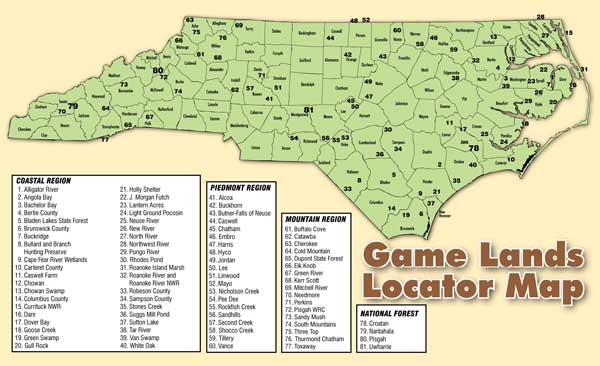
Some of the state’s 2 million public acres will be smokin’ hot this year.
With more people moving to North Carolina and conversions of former farms and wood lands into housing tracts and shopping centers, finding places to hunt can be a frustrating experience.
But don’t forget North Carolina’s public lands, which in this state are called “game lands” and are managed by the N.C. Wildlife Resources Commission.
In 2008 North Carolina has about 75 game lands, stretching across approximately 2 million acres. All it takes to hunt most of them is a hunting license, although some hunt require special permits. Anyone interested in hunting at a permit-only game land should obtain a free copy of Special Hunt Opportunities in North Carolina booklet.
As for the coming hunting seasons, Tar Heel sportsmen should be able to satisfy their longings at most N.C. game lands — with a few exceptions, such as no black bears in the piedmont, little public-land waterfowl hunting opportunities in the far western counties and quail numbers still low across most of the state.
But deer should be plentiful at nearly every game land, along with squirrels, rabbits and doves. Look elsewhere in this story for a section about public-land dove hunting.
Here’s our annual look at N.C.’s game lands and what they offer for sportsmen in 2008-09.
EASTERN N.C.
Deer
Best game-land bets:
Juniper Creek, Roanoke River Wetlands and National Wildlife Refuge, Holly Shelter, Croatan National Forest, Suggs Mill Pond, Lantern Acres, Dover Bay, Van Swamp, Chowan.
Juniper Creek is a new addition to N.C.’s game lands (from International Paper) this year at 18,624 acres next to the Green Swamp in Brunswick County.
“It has good deer hunting opportunities,” said regional wildlife biologist supervisor Tommy Hughes, “but it’s by permit only. Access is pretty good at most of the tracts, although we’ve closed a lot of roads that can’t maintain high levels of traffic, but we’ve kept strategically-located roads for access while others are available for foot travel.”
Juniper Creek GL has some pine plantations, a lot of gum-and-cypress swamps, pocosins and some cutovers, ideal deer habitat.
“It’s pretty rough country and has .rattlesnakes and cotton mouths,” Hughes said. “It’s pretty much like any of the southeastern (N.C.) game lands.
In northeastern N.C., Hughes said the WRC had added the Woods Island tract to the Roanoke River Wetlands Game Land in Bertie County at the northern side of the river.
“It’s close to Lewiston, and includes about 600 acres,” Hughes said.
Chowan Swamp GL, also off the Roanoke River, has deer.
“Hunters can kill deer at Gull Rock (GL) — if they can stand the mosquitoes,” Hughes said.
In central eastern N.C., Hughes pointed to Croatan National Forest, which allows still and dog hunting, along with Holly Shelter.
“Holly Shelter has some still-hunting-only areas, near the old greentree reservoir and the Pender Ford tract on the west side of the (Cape Fear) river,” Hughes said. “There are small tracts where dogs couldn’t be kept from running deer at private land.”
The Bear Garden Tract will have permit-only deer hunts.
The Caintuck portion of the Cape Fear Wetlands also has still hunting only after problems landowners had with dogs chasing deer on their adjacent properties.
“The landscape has changed so much,” Hughes said. “Ownership of land has swapped hands a lot, so it’s much more difficult for dogs to run (deer) now.”
Angola Bay in Duplin and Pender counties (near Holly Shelter) also has still and dog hunting for deer.
In southeastern N.C. Suggs Mill Pond GL is a permit-only area for all types of hunting.
“We also have several new disabled-hunter areas at the coast,” Hughes said.
Those include deer hunts at Suggs Mill Pond, Holly Shelter and White Oak Game lands, where hunt blinds were being built during July.
“At the Roanoke River Game Lands, we’ll be using the new lift blinds for disabled hunters during the two-day hunts there,” Hughes said.
The blinds will be set up at “managed openings” (food plots), Hughes said.
“They’re open to anyone with a disabled access permit and their companions can hunt, too,” he said.
Black Bear
Best game-land bets:
Croatan National Forest, Chowan Swamp, Chowan, Juniper Creek, Holly Shelter, Angola Bay, Long Shoal Tract of Gull Rock, Dare Bombing Range, Buckridge.
Croatan National Forest is by far the leading game land for eastern N.C. black bear harvests as hunters bagged 20 bears during 2007. Only Tyrrell County (22 bears) had more kills, but Tyrrell has three game lands (J. Morgan Futch, Lantern Acres and New Lake).
Juniper Creek GL also will have bear hunting in 2008, although part of the area includes a bear sanctuary, Hughes said.
Angola Bay, the Long Shoal Tract at Gull Rock GL and the Dare Bombing Range (permit only dog and still hunts) have huntable bear populations.
“Buckridge Game Land (at Craven County) also should have some bears,” Hughes said.
Chowan Swamp GL, on the eastern shore of the Chowan River in Gates County, also should provide decent bear hunting, as will Chowan Game Land, just to the south.
Waterfowl
Best game-land bets:
Suggs Mill Pond, Croatan National Forest, Goose Creek, Lantern Acres, Roanoke River NWR and Wetlands, Holly Shelter, White Oak River, J. Morgan Futch, North River.
Suggs Mill Pond GL in Bladen County offers quality waterfowl hunting, but it’s a permit-only area.
“It has ringnecks and wood ducks,” Hughes said.
Catfish Lake at Croatan National Forest provides hunting for wood ducks, ringnecks, some mallards, a springing of wigeon, gadwall and pintails.
“It has no (permanent) blinds, but hunters can carry in and carry out their own blinds,” Hughes said.
With its five impoundments and nearby access to the Pamlico River, Goose Creek (Beaufort, Pamlico counties) is highly pressured by duck and goose hunters.
It’s also permit-hunting.
“Goose Creek has wigeon, green-wing and blue-wing teal, pintail, gadwall, ringnecks and tundra swan,” Hughes said.
Lantern Acres has a new 200-acre impoundment, but it will be permit-only hunting as well.
“It’ll be dependent upon rainfall to flood that impoundment,” Hughes said. “We use a well to top it off or maintain the level, but if we’re still in a drought, the well can’t handle that much area.”
The Roanoke River Wetlands and National Wildlife Refuge Game Lands also have permit-only early- and late-season waterfowl hunts at six tracts.
“There are woodies, a smattering of ringnecks, divers, teal and mallards at the Roanoke River,” Hughes said.
The Gull Rock GL impoundment off Loop Road will have some birds, but their movements will depend upon the weather at nearby Pamlico Sound.
“If it’s rough (on the sound), it pushes birds to the impoundment,” Hughes said, “but you have to remember there’s a lot of big (private) impoundments around it — a lot of competition. The rougher the weather the better at Gull Rock.”
Gull Rock hunting is permitted only Tuesdays and Saturday, holidays and opening and closing days of waterfowl seasons.
Holly Shelter’s Lodge Road impoundment is dependent upon rainfall for wood duck hunting.
White Oak River Impoundment GL is a small (100-acres) site in Onslow County that can offer terrific teal, wood duck, wigeon and diving-duck hunting.
The huge J. Morgan Futch GL (Tyrrell County) is basically 600 acres of managed waterfowl habitat split into 15 impoundments and sees many hunters.
“It’s got a lot of wood ducks and tundra swan, in addition to greenwing teal, ringnecks, and some years, a lot of pintails,” Hughes said.
Permits are issued by impoundment so no single area receives intense pressure. One to three hunters may hunt on each permit.
The North River GL (on the Camden County) side has three sub-impoundments that hold wood ducks, teal and sometimes mallards.
Small Game
Best game-land bets:
Stones Creek, Roanoke River Wetlands and NWR, Croatan Forest, Lantern Acres, Holly Shelter, Croatan, Chowan Swamp, Holly Shelter.
Stones Creek, a relatively small game land south of Jacksonville and west of the New River, has a “lot of early successional growth and might produce some rabbits,” Hughes said.
“Croatan National Forest has a lot of cutover and agricultural areas and people find rabbits there, too. Rabbit hunters also like the Roanoke River (game lands).
“The big thing about Croatan National Forest is if you bring beagles, you need to make sure they won’t run deer. In fact, if you beagles run deer, you’ll have a hard time hunting rabbits at the coast.”
Hughes said Lantern Acres would be worth trying for rabbits and “maybe even Holly Shelter, which has a lot of field edges.”
Squirrel hunting for gray squirrels will be best at Roanoke River, while Hughes said Chowan Swamp GL has some good potential for squirrel hunts, along with parts of Holly Shelter near the Cape Fear River.
Some quail might be found at Stones Creek and Lantern Acres.
“Stones Creek has a lot of cutover, a lot of early successional habitat, and it’s got wiregrass in the longleaf pine plantations,” Hughes said. “Lantern Acres has a lot of early success stuff and there’s some huntable quail up there, although the going can be tough; it’s thick.”
Field edges at Holly Shelter will provide covey shots but no single birds, Hughes said, because they’ll head to the thick stuff once they flush.
“Croatan has lots of fields and openings, too, especially on the Haywood Landing side near N.C. 58, which also has some agricultural areas,” Hughes said.
CENTRAL N.C.
Deer
Best game-land bets: Jordan Lake, Uwharrie, Butner-Falls, Harris, Embro, Sandhills, Hyco, Mayo, Shocco, Second Creek.
The Jordan Lake Game Land, including 40,595 acres surrounding the lake of the same name in Chatham, Durham, Orange and Wake counties, is the best piedmont region for public white-tailed deer hunting, said Central Region supervising biologist Harlan Hall.
“Jordan Lake leads all state game lands in total deer harvested each year,” he said. “We’ve gotten complaints from local landowners about deer (eating crops) at their (farm) land that adjoins the game land.”
The majority of Jordan Lake Game Land is in Chatham County.
“It’s got good hardwoods around the lake, and there’s no dog hunting,” Hall said. “It’s still a desirable place to go.”
Jordan GL gets a high number of visitors from northwestern and western N.C., where gun seasons end the first and second Saturdays of December, respectively, while the central season doesn’t halt until after New Year’s Day.
Hall named the huge Uwharrie National Forest as his second choice for deer hunters.
“It’s got lots of hardwood forests and deep ravines,” he said. “There’s plenty of agricultural land down there, too.”
Hall said a new game land, Embro, containing 30,000 acres in eastern Warren County and western Halifax County, also should be a hot spot for deer hunting.
“About 15 of us have been doing three days of posting that game land between Warrenton and Roanoke Rapids,” Hall said during mid July. “It has several large tracts.”
The Embro GL is south of Kerr Lake and is split by Little Fishing Creek. It’s almost 2-miles wide by 4-miles long. About 18,000 acres are ready to be hunted this year with the remaining 12,000 acres to be prepared for 2009.
“It has nice bottom land along stream corridors and some wet lands,” Hall said. “Most of it is in young pine plantations, as it formerly belonged to International Paper Company.”
A “fair amount” of deer hunting occurs at the Sandhills Game Land, spread in many sections across Hoke, Moore, Richmond and Scotland counties.
“It’s not one of the best (for deer), but you can dog hunt the whole thing,” Hall said. “For a short period you can even hunt the field trial area. It also has a short either-sex season.”
The new Buckhorn Game Land, south of I-40/85 off Buckhorn Road in Orange County, offers only archery permit deer hunting.
“We wanted to expand hunting opportunities, but OWASA (Orange Water and Sewer Authority) didn’t go along with that idea,” he said. “But it’s a good area; we didn’t have any problems there last year.”
The new Second Creek Game Land in Rowan County has permit bow, muzzle-loader and rifle/shotgun deer hunting.
“We had good participation last year (the region’s opening year),” Hall said.
Second Creek offers Sept. 13-Nov. 7 permit-only either-sex bow hunts, a week (Nov. 8-15) of either-sex muzzle-loader by-permit hunts, and six two-day permit-only either-sex gun hunts from Nov. 20 to Dec. 27.
Hunters should check the Special Hunt Opportunities booklet for dates and how to apply.
“Caswell Game Lands (17,198 acres in the northern piedmont of the same name) is always a standby for deer hunters,” Hall said. “You also can dog hunt, but getting written permission from nearby landowners is not a bad idea. A lot of the (game land) is adjacent to or surrounded by private land and Caswell has a local that requires written permission to be on someone’s private land.”
At July’s commissioners’ meeting, proposals were offered regarding changes in deer hunting for N.C. private land, including one season for the entire state and use of any weapon (bow and arrow, muzzleloader, rifle or shotgun) at any time at private lands. These ideas will have to survive an inter-agency discussion before they can be presented at January’s public hearings.
However, commissioners can offer the proposals without staff approval.
Waterfowl
Best game-land bets: Jordan Lake, Butner-Falls, Harris, Caswell, Chatham, Lee, Alcoa, Hyco, Mayo, Sandhills.
The centerpieces of the Central Region’s best game-land duck hunting are the three lakes that are shaped somewhat like the region’s nickname, the Triangle.
Butner-Falls, Jordan and Shearon Harris lakes (and their surrounding game lands) aren’t specifically closer to Raleigh-Durham-Chapel Hill, but Butner-Falls is closest to Raleigh, Jordan is nearer to Chapel Hill than Durham and Shearon Harris is slightly southeast of Chapel Hill.
Butner-Falls has seven diked waterfowl impoundments (flooded by a pump system before waterfowl season — if water is available). The impoundments include Knapp of Reeds, Bluff, Flat River, Beaver Dam, Brickhouse Road, Butner Depot and Little River.
The most common ducks at these impoundments include ringnecks, green-wing teal, wood ducks and mallards.
A special permit is required to hunt Butner Depot, Beaver Dam, Bluff and Flat River impoundments after Nov. 1. The impoundment flooding schedule doesn’t include the Little River.
Jordan GL has seven “green tree” impoundments (Upper Little Creek, Lower Little Creek, New Hope River, Stagecoach, Northeast Creek, Beaver Creek, I-40) that have trees growing in low areas that are flooded seasonally, mainly attracting wood ducks and mallards.
Last season because of the prolonged drought, many impoundments weren’t open to hunting because they were dry with no water available to flood them. Some of the Jordan impoundments also aren’t flooded on a rotating basis in order to reduce mast-bearing tree mortality (they’ll be open in subsequent hunting seasons).
“(The WRC) will continue the hunting dates schedule for these lakes as in the past,” Hall said, “to relieve hunting pressure.”
Butner-Falls hunting days will be Tuesdays, Thursdays, Saturdays, Christmas and New Year’s days and opening days of applicable waterfowl seasons and no hunting is allowed after 1 p.m.
Jordan Lake waterfowl hunting (in-season) days are Mondays, Wednesdays, Saturdays, opening days, Thanksgiving, Christmas and New Year’s days and opening and closing days of seasons.
Harris GL waterfowl hunting will be allowed Tuesdays, Fridays and Saturdays in-season along with Thanksgiving, Christmas, New Year’s days, plus opening and closing days. Ringneck ducks are the primary waterfowl seen at Harris.
“(The WRC) just purchased the Brumley Tract (at Caswell Game Lands) and it has two waterfowl impoundments,” Hall said. “We’re trying to get them in shape with pumps for this fall.”
Located off Stephenstown Road in the northeastern section of the Caswell GL, the Brumley Tract impoundments cover 12 to 15 acres, Hall said.
“We’ve planted a lot of Japanese millet (in July), and it has a 60-day maturation, so (the impoundments) should be ready this season,” he said.
Caswell’s older, other impoundment is off High Rock School Road.
Both areas require permits, but hunting dates and area choices won’t be available until Sept. 1. Hunters then may visit a local wildlife service agent or check www.ncwildlife.org.
The Chatham and Lee game lands, which have jump-shooting at opposite sides of the Cape Fear River, are accessible at the Buckhorn WRC ramp south of Harris lake where N.C. 42 crosses the river.
Along the Yadkin-Pee Dee drainage are Alcoa and Pee Dee game lands that offer decent duck hunting near the river at times.
Shocco Creek GL in Franklin and Warren counties features a 15-acre beaver pond that draws in woodies, mallards and a few Canada geese, when water conditions are normal (no drought).
The Sandhills Game Land has a few ponds that hold wood ducks.
Small Game
Best game-land bets:
Uwharrie, Butner-Falls, Jordan Lake, Caswell, Second Creek, Roanoke River Wetlands and National Wildlife Refuge, Embro, Sandhills.
Small game mostly means rabbits and squirrels in North Carolina, with some consideration of quail.
The large, mountainous Uwharrie game land features hardwood ridges, good for squirrel hunters. Most central region game lands will have squirrels because most have hardwoods. Butner-Falls, Caswell, Jordan Lake and other game lands with hardwoods should have squirrels.
“Any place at game lands with hardwoods should be good,” Hall said.
Sandhills GL also has fox squirrels.
Rabbit hunting should be decent at Butner-Falls GL, especially fields off Brickhouse Road and near the Wildlife Depot.
“CURE areas at game lands should help rabbit populations,” Hall said, “and you can hunt rabbits at CURE areas (but not quail).”
Some of the International Paper land additions to game lands in District 3 will have good rabbit hunting, Hall said, include scattered lands in Edgecombe, Halifax, Northampton and Warren counties.
“The new Embro Game Land (acquired from IP and mostly in Warren County with a small section in western Halifax) should have some quail,” Hall said. “We heard quail at places in young pine plantations, but it’s thick and might be tough to hunt.”
WESTERN N.C.
Deer
Best game-land bets:
Pisgah, Needmore, South Mountains, Johns River, Green River, Thurmond-Chatham, Buffalo Cove, Mitchell River, DuPont State Forest.
Geoffrey Brooks, a WRC management biologist for western N.C., said the Pisgah, Needmore and South Mountains game lands are the top three for white-tailed deer in his area.
“Buffalo Cove and Mitchell River game lands in District 7 are fairly good for deer, too,” Brooks said.
The Little Tennessee River splits the Needmore GL (4442 acres in Macon and Swain counties) and has good bottomland and early successional habitat for deer.
The new Johns River GL (2800 acres in Burke County north of Morganton) has some good deer habitat, and Mills River section of Pisgah GL near Asheville also is a favorite of deer hunters.
“Dupont State Forest, a permit-only place, also has pretty good deer hunting,” Brooks said. “It once a lot of active timber management but hasn’t had as much since the (N.C.) Forest Service acquired it. But (WRC) still plants 4 or 5 acres (of fields) out there.”
Green River and Thurmond-Chatham and Mitchell River also should have deer, said Kip Hollifield, the WRC’s supervising biologist in the west.
“There’s not a lot of bottomland out here,” Hollifield said. “It’s just a matter of getting out and doing some scouting to be successful.”
Black Bear
Best game-land bets:
Pisgah, Needmore, South Mountains, Johns River, Buffalo Cove, Mitchell River, DuPont State Forest.
Bear populations continue to grow in western N.C., so much that bruins are often traffic hazards.
“I just looked at a 300-pounder that got hit on I-40 in the Pigeon River Gorge between Waynesville and the Tennessee line,” Brooks said during July.
The N.C. DOT has increased the height of the concrete lane barrier to almost 10 feet, making wildlife passages (deer, bear) almost impossible at this stretch of I-40.
“It’s a safety precaution because of so many (auto) accidents, but it’s made it tough on wildlife getting across (the road),” Brooks said.
This stretch of the highway cuts through the Pisgah National Forest, which remains a top bear area, Brooks said.
“You can get off on Cold Springs Road and get to a 12-mile strip of national forest land there to hunt bear,” he said.
“But bear are showing up everywhere. They’re also in the Nantahala Forest.”
Bear numbers also are good at Wilkins Creek in the White Oak area.
“There’s 3200 acres at Cold Mountain game land, surrounded by Pisgah and Nantahala forests, that have bear,” Brooks said.
Waterfowl
Best game-land bets:
Needmore, Johns River.
Wood duck hunting will be available at Johns River GL, an area where the Johns and Catawba rivers merge.
The WRC abandoned a plan to build impoundments at the game land when biologists discovered water seeped through the rocky soil.
“There’s several beaver ponds along the feeder creeks and hopefully they’ll have some ducks,” Hollifield said.
“Some hunters float the Little Tennessee through the Needmore game land, but that’s about the only other game land in the mountains with waterfowl,” Brooks said.
Small Game
Best game-land bets:
Johns River, SandyMush, Pisgah, Nantahala, South Mountains.
The Johns River Game Land and Sandy Mush, a new tract at the western edge of Buncombe County adjoining Madison County, probably will be the top two small-game areas in the west, Brooks said.
“Sandy Mush is only 2600 acres, but half of it is open fields and pastures,” he said.
In addition to good field hunting for doves, Sandy Mush has good rabbit hunting with a few quail and many turkeys.
“Squirrel hunting will depend upon mast crops, but Pisgah and Nantahala usually have good numbers of squirrels,” Brooks said. “A lot of people hunt them with mountain curs and feists.”
The Mitchell River GL has lots of clear cuts and should have good rabbit hunting, Hollifield said.
Hollifield said 2008’s major game-land addition in the west is 1800 acres at South Mountains Game Land.
“(The land) was owned by an individual and his family wanted to sell it to the state and worked with us,” Hollifield said. “It was a good acquisition, a missing piece of the puzzle.”
The private tract once jutted into the game land between Roper Hollow Road and Bollinger Gap Road.

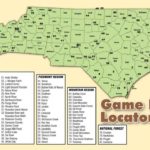
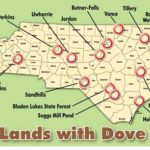
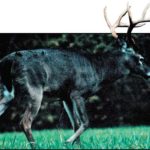
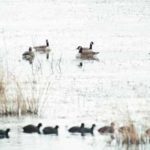
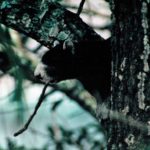
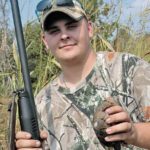

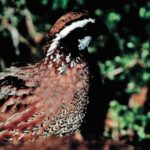
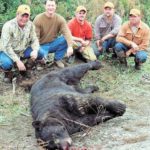
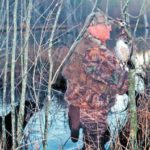



Be the first to comment